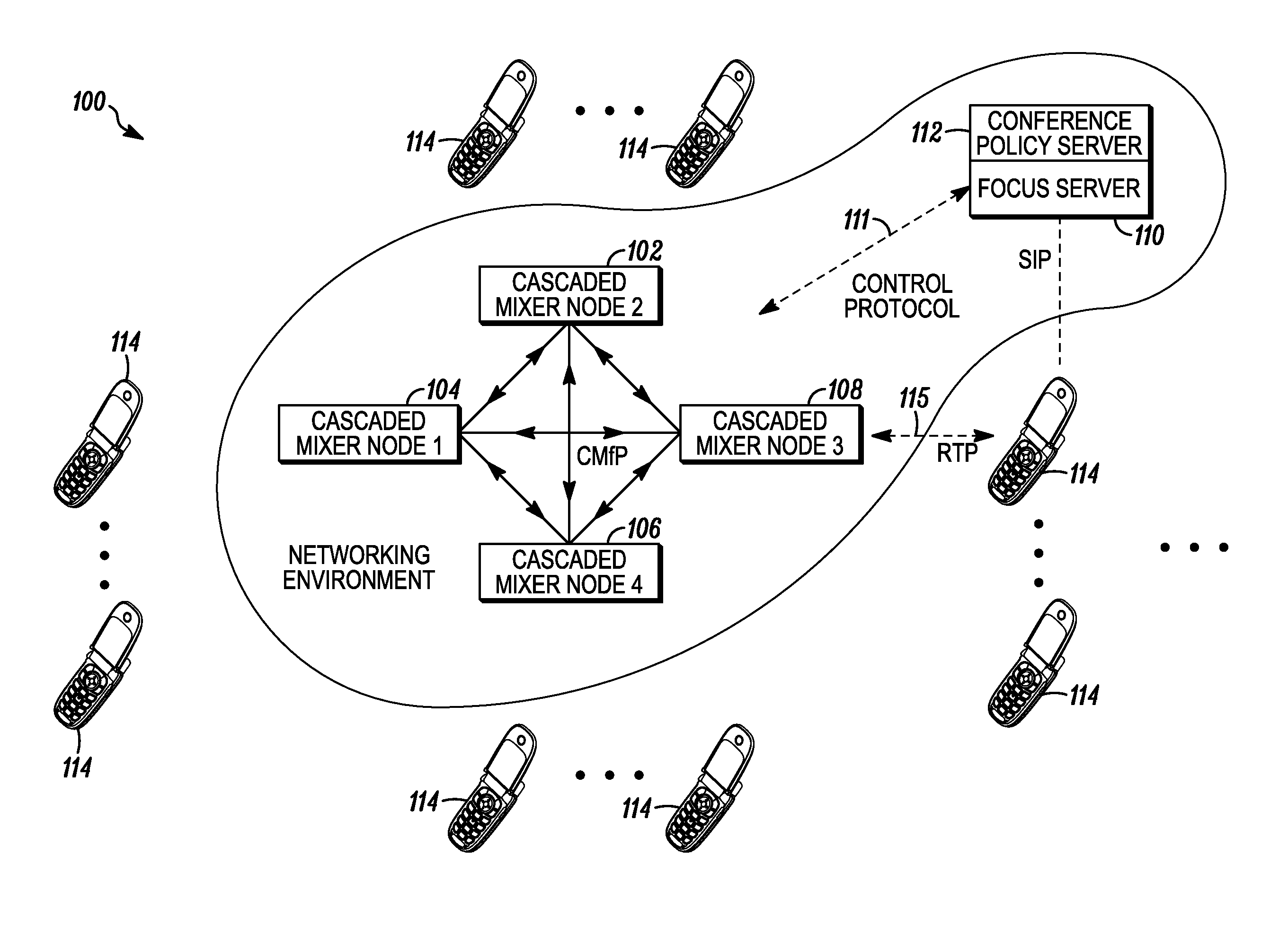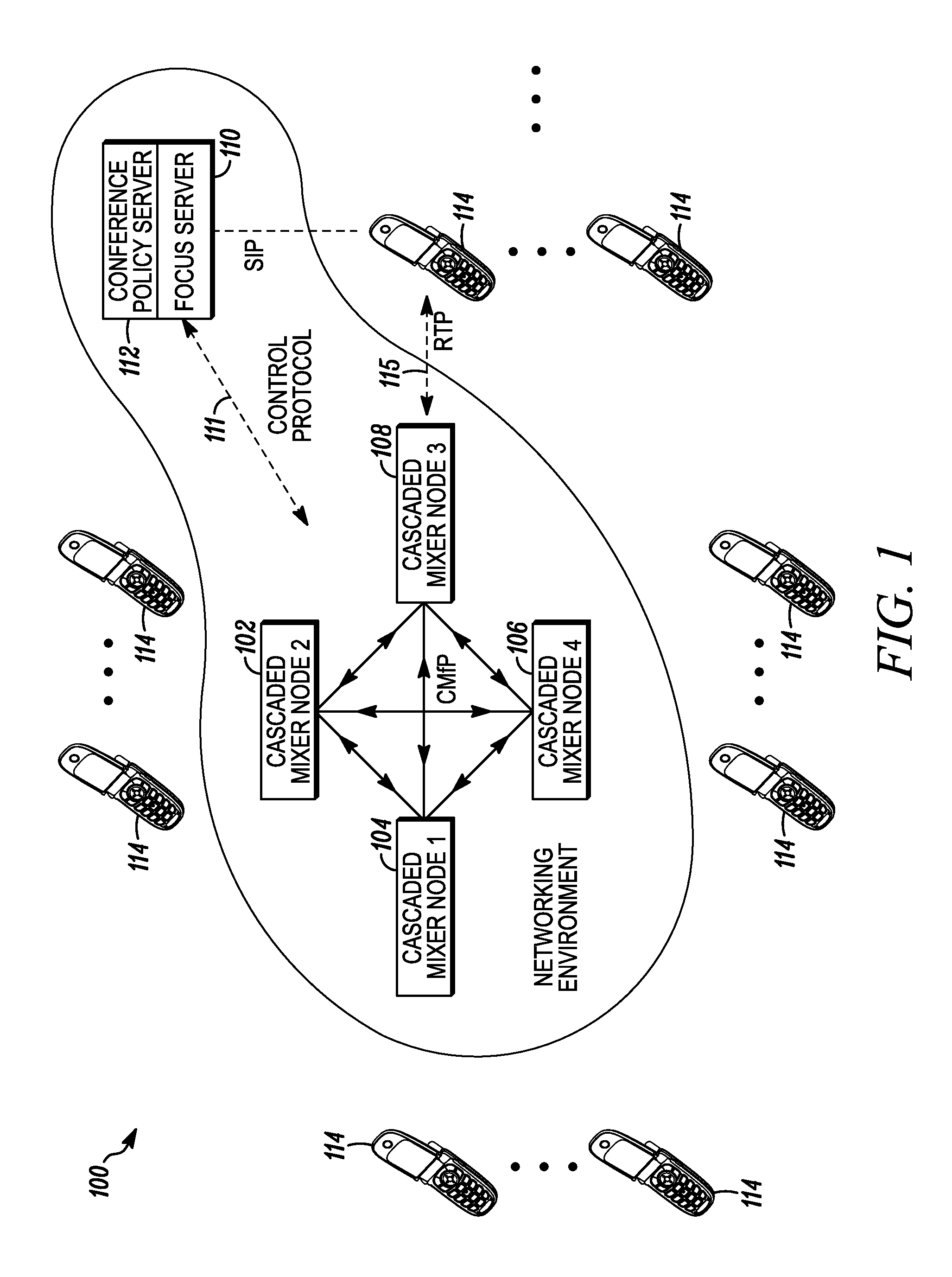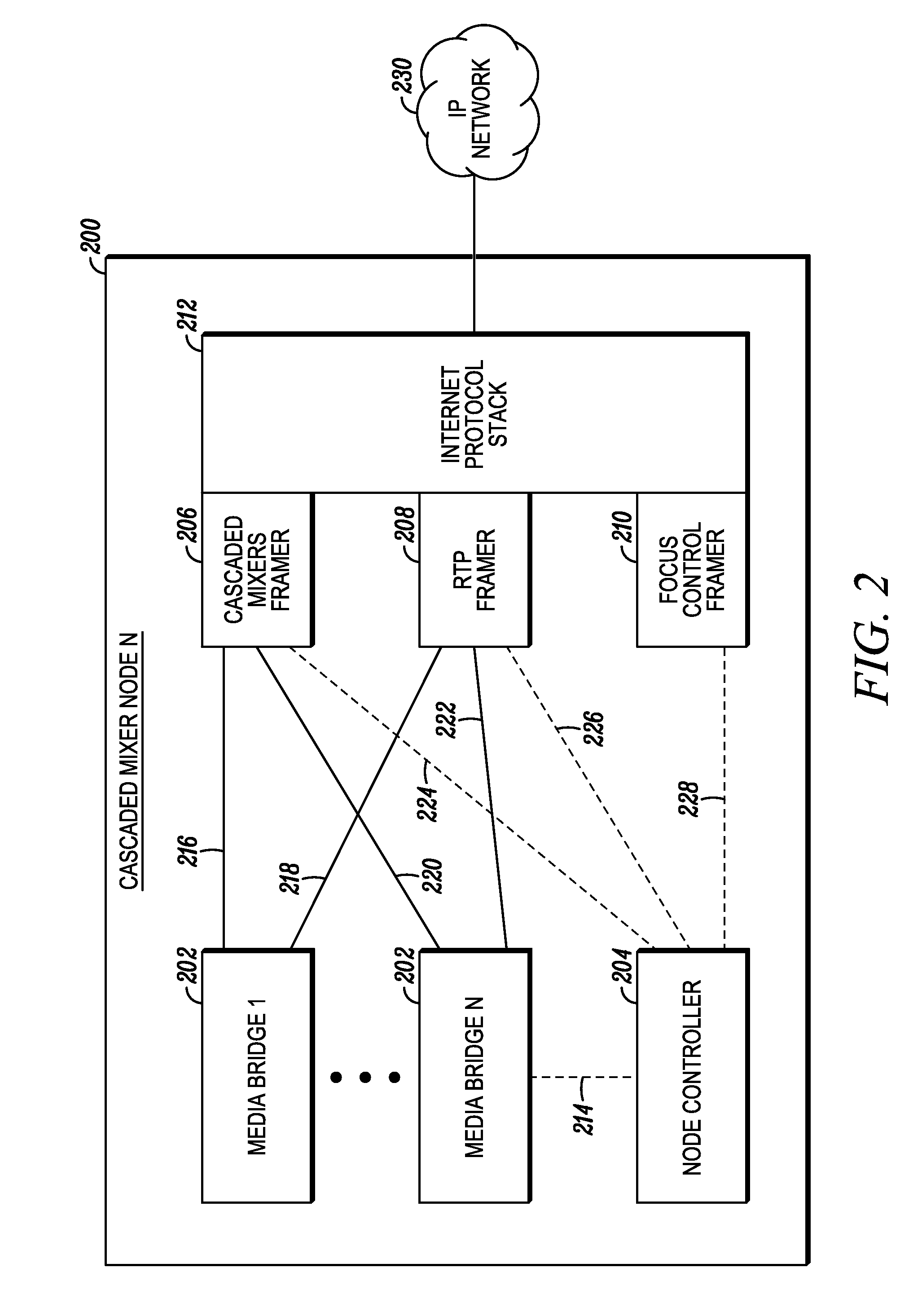Decoupled cascaded mixers architechture and related methods
a cascaded mixer and cascade technology, applied in the field of communication systems, can solve the problems of shutting down all conferences in the network, increasing computational load, and single mixer nodes not being able to handle media load,
- Summary
- Abstract
- Description
- Claims
- Application Information
AI Technical Summary
Benefits of technology
Problems solved by technology
Method used
Image
Examples
Embodiment Construction
[0027]Generally speaking, pursuant to the various embodiments, the present disclosure provides a decoupled cascaded mixer node framework and related methods for inter-mixer node communication, dynamic “self-forming” of a cascaded mixer node topology, and talker identification within the “self-formed” cascaded mixer node topology. For purposes of this disclosure, the term “self-form”, “self-formed”, or “self-forming” refers to the ability of distributed cascaded mixer nodes to engage in peer-to-peer communications to coordinate with one another, with only minimal input from a Focus server, in order to control formation of a per call mixing tree and to also control handling of mixer node load balancing and self-recovery from root node failure events.
[0028]As used herein, the terms “root node”, “root”, “roots”, “conference root”, “tree root node”, “tree root” and “tree roots” are used interchangeably to indicate a cascaded mixer node at a highest hierarchical level of a plurality of ca...
PUM
 Login to View More
Login to View More Abstract
Description
Claims
Application Information
 Login to View More
Login to View More - R&D
- Intellectual Property
- Life Sciences
- Materials
- Tech Scout
- Unparalleled Data Quality
- Higher Quality Content
- 60% Fewer Hallucinations
Browse by: Latest US Patents, China's latest patents, Technical Efficacy Thesaurus, Application Domain, Technology Topic, Popular Technical Reports.
© 2025 PatSnap. All rights reserved.Legal|Privacy policy|Modern Slavery Act Transparency Statement|Sitemap|About US| Contact US: help@patsnap.com



